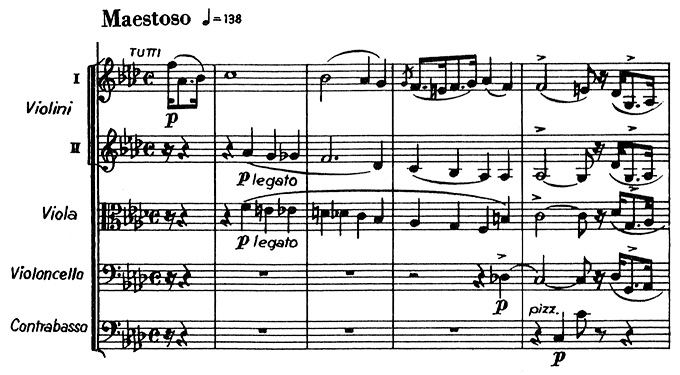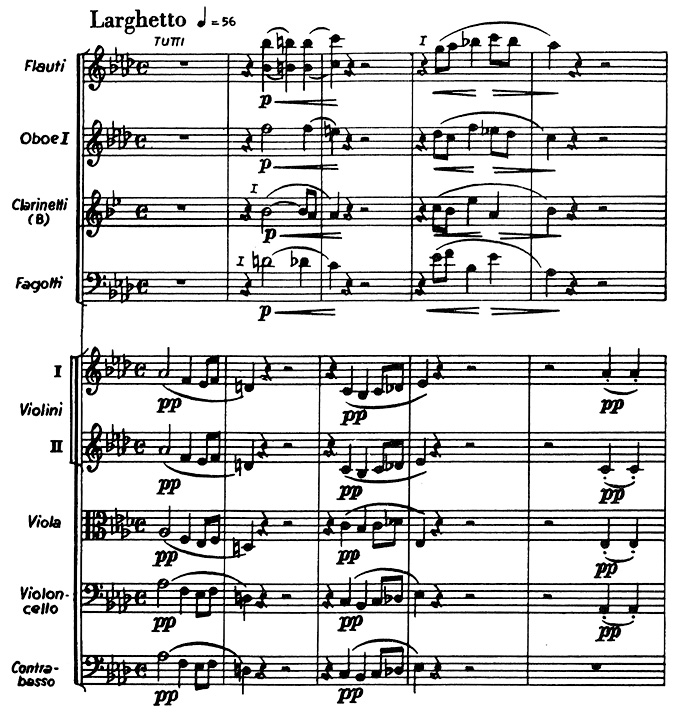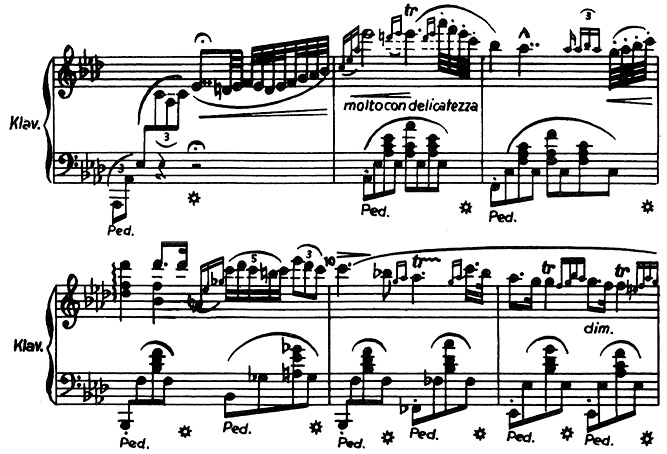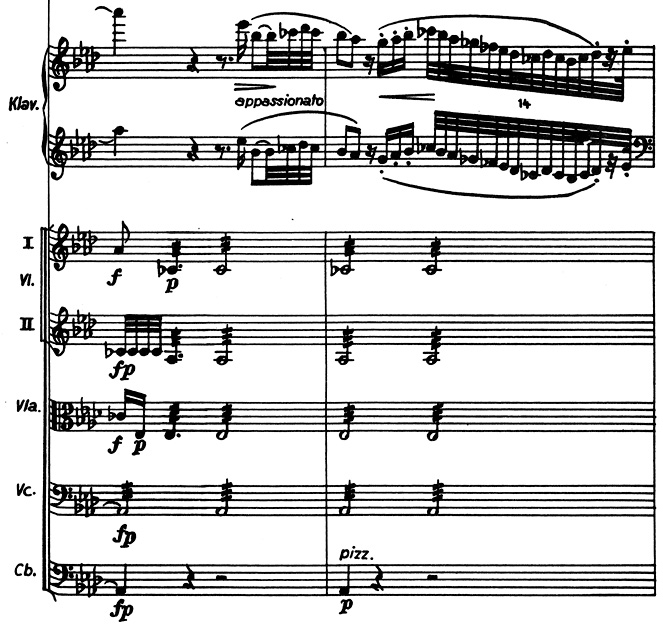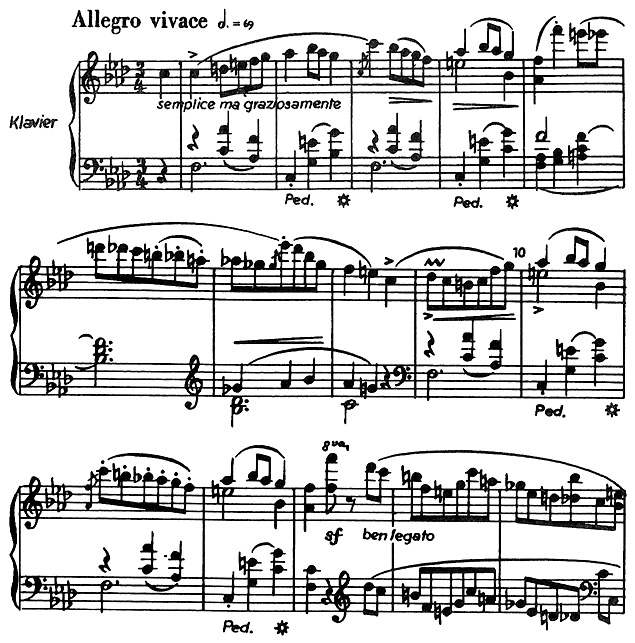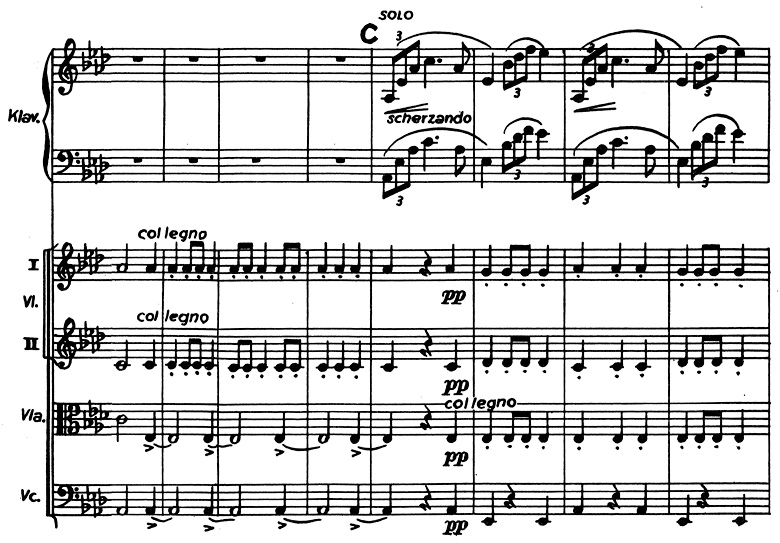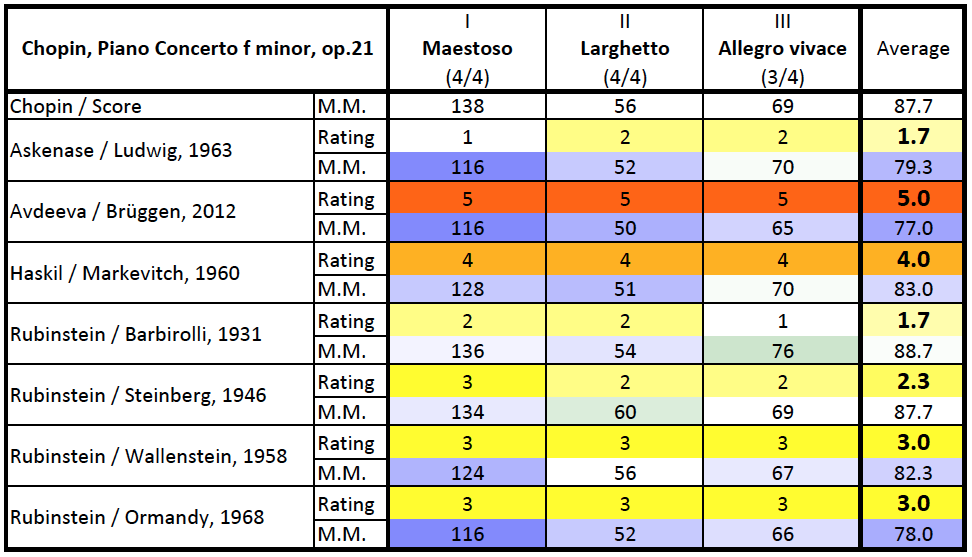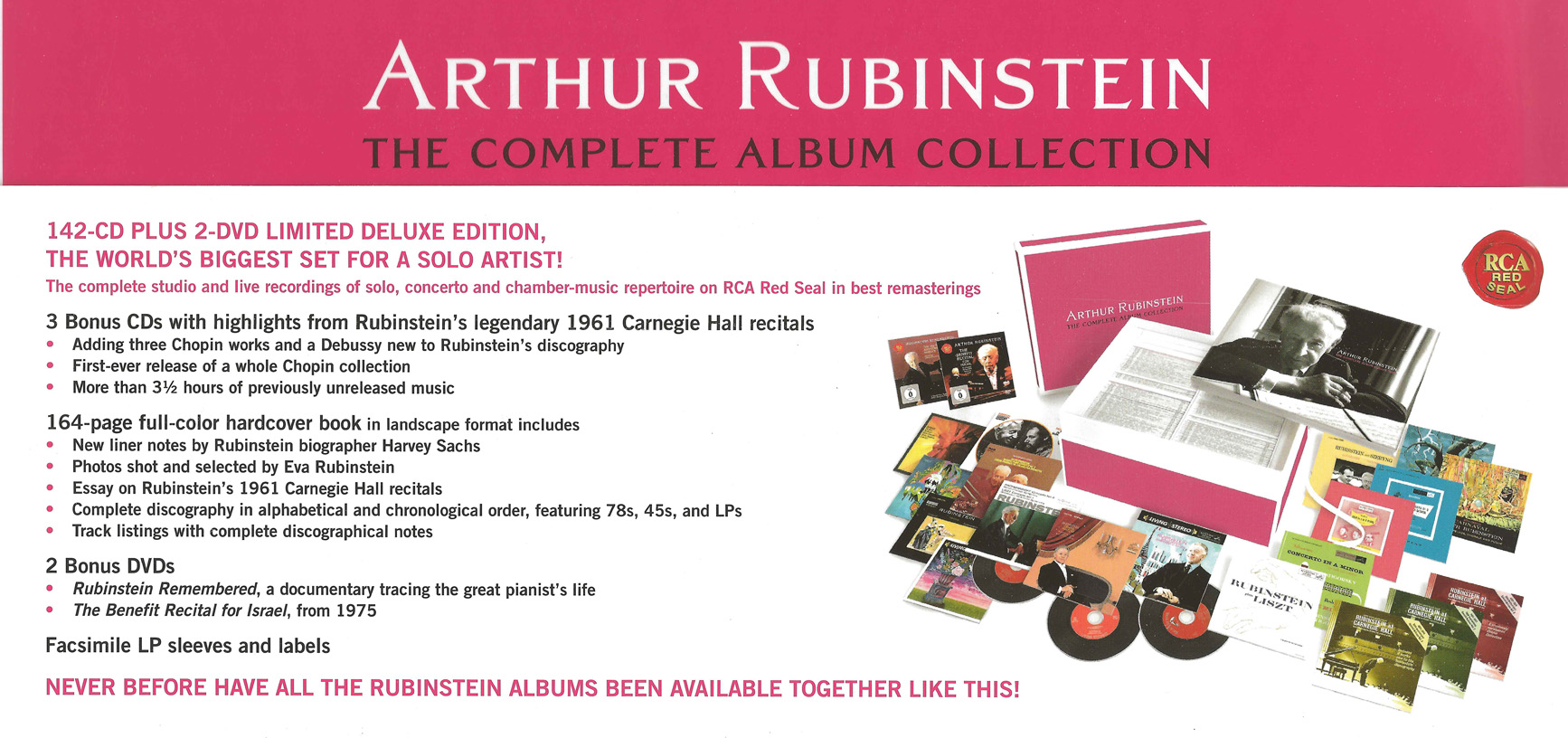Frédéric Chopin
Piano Concerto No.2 in F minor, op.21
Media Review / Comparison
2014-07-14 — Original posting (on Blogger)
2014-11-12 — Re-posting as is (WordPress)
2016-07-21 — Brushed up for better readability
Table of Contents
Introduction / The Recordings
This post was originally triggered by Yulianna Avdeeva‘s recording below; meanwhile, I have received a generous gift, Arthur Rubinstein’s Complete Album Collection, which includes four additional recordings by Rubinstein. All these are now included as well. Here are the recordings that I’m going to discuss in the case of Chopin’s op.21 (sorted by the pianist’s last name):
- 1963: Stefan Askenase, Leopold Ludwig, Berliner Philharmoniker
- 2012: Yulianna Avdeeva, Frans Brüggen, Orchestra of the 18th Century
- 1960: Clara Haskil, Igor Markevich, Orchestre des Concerts Lamoureux
- 1931: Arthur Rubinstein, Sir John Barbirolli, London Symphony Orchestra
- 1946: Arthur Rubinstein, William Steinberg, NBC Symphony Orchestra
- 1958: Arthur Rubinstein, Alfred Wallenstein, Symphony of the Air
- 1968: Arthur Rubinstein, Eugene Ormandy, Philadelphia Orchestra
About the Composition:
Frédéric Chopin (1810 – 1849) composed both his piano concerti around 1829/30. Still, his Piano Concerto No.2 in F minor, op.21 actually is his first piano concerto and was composed prior to what we now know as “piano concerto No.1 in E minor, op.11”. I’m covering both concerti in my blog, but I’m starting with the one in F minor, op.21. The chronology is just one reason for choosing that order. Also,
- op.21 is somewhat in the shadow of it’s more famous companion, op.11. It is less spectacular, maybe more introverted. I felt I could appreciate its qualities better if I listened to it first;
- the original drive for reviewing the Chopin concerti came from the acquisition of Yulianna Avdeeva’s recording on a period instrument, and in a first, quick review I found the period instrument to have a most profound, dramatic effect on the outcome of op.11, whereas in op.21 the differences to a modern concert grand are more subtle. Also here, I felt that I could better appreciate the strengths (and weaknesses?) of that instrument when experiencing it in op.21 first.
The Environment for Chopin’s Concerto
Before going into details, let me quote some information from Stefan Askenase’s foreword to the Eulenburg score (E.E. 6108-09, 1957, revised by Stefan Askenase): for all that we know, Chopin did not know Beethoven’s piano concerti when he wrote his two concerti. These two compositions should therefore not be compared or related to Beethoven’s: Chopin played and knew concerti that composers such as Adalbert Gyrowetz (1763 – 1850), Ferdinand Ries (1784 – 1838), Ignaz Moscheles (1794 – 1870) and Johann Nepomuk Hummel (1778 – 1837) had written mainly for themselves, i.e., to present their pianistic abilities to the public.
For the first movement of his op.21, it appears that Chopin almost copied the structure of the equivalent movement in one of Hummel’s concerti. Even though of course the musical language he used is entirely his own. The composition consists of three movements:
The Movements
I. Maestoso (4/4)
The first movement is a Maestoso (346 bars, 4/4, 1/4 = 138), starting with the main theme in the strings:
Bar 34 starts a transition to a second, lyrical theme in bars 40ff., in the woodwinds:
While there appear to be two main themes, this isn’t a classical sonata movement with exposition, evolution, recapitulation and coda, but rather a free, fantasy-like form, and there is no provision for a cadenza. The metronome indication appears somewhat questionable, as the movement has extended, virtuosic passages in semiquavers, and there are also passages with demisemiquavers. Artists may be able to perform at 1/4 = 138 (Rubinstein comes close in his earliest recording), but certainly not adding much to the benefit of the listener or the composition: the “popular comfort zone” appears to be around 1/4 = 120, see below.
Rubinstein appears to play a different version of the concerto which does not include bars 335 – 342, just prior to the final four bars.
II. Larghetto (4/4)
The second movement is a Larghetto (95 bars, 4/4, 1/4 = 56), starting with
in a dialog between the strings and the woodwinds; the piano then starts with
Almost throughout the movement, the piano part is freely preluding and very melodic in the right hand, with rich ornamentation, while the left hand mostly holds the accompaniment and the harmonic foundation.
There is an extensive middle part where the strings play a dramatic tremolo, while the piano plays a very vocal (though not really singable) recitativo, mostly with the two hands in octave parallels:
A short cadenza-like passage (2 bars) leads back to the initial “scene”; overall, a really serene, intense, highly emotional movement! In this and the last movement, the metronome markings in the score appear more realistic. Not all of this movement is technically as demanding as the first one. However, maintaining the musical flow in both hands appears to be tricky, given the vastly different roles of the two hands in the outer parts: the left hand mostly playing quavers while the right hand needs to master an array of exuberant ornaments, up to hemidemisemiquavers. Having the left hand waiting for the right hand to finish a bar will not be good enough!
III. Allegro vivace (3/4)
The last movement is an Allegro vivace (494 bars, 3/4, 3/4 = 69) starting with the following passage in the piano (string accompaniment not shown):
The middle part (A♭ major, starting with bars 141ff.) features a scherzando with col legno accompaniment in the strings. It becomes obvious that this is a Mazurka folk dance:
A short, notated cadenza (bars 316 – 323) leads back to the initial theme in F minor. In bars 406ff., after a modulation to f major a horn signal indicates the start of a coda; in bars 472/473 there is a fermata on the dominant seventh chord, followed by a general rest. There is again no “real” cadenza, but just a joyful ending phrase of 21 bars, based on the Mazurka theme.
Timing & Rating Comparison
I have put together a little table, giving my (personal, relative) ratings (1 .. 5) and the metronome readings (approximate) for each movement & interpretation (blue indicating slower, green indicating faster performances); unlike with pieces where no “original” / “historic” metronome markings are provided, the “middle position” for the color mark-up is not the average, but the metronome rating in the score:
For details on the ratings see my comments below.
Comments on the Individual Recordings
Stefan Askenase / Leopold Ludwig (1963)
“A Tribute to Chopin” (various works)
Stefan Askenase, Leopold Ludwig, Berliner Philharmoniker
Stardust Records (iTunes download, 256 Kbps, stereo); ℗ 2007
(no booklet)
Currently not available on CD

Stefan Askenase (1896 – 1985), who also revised the score of this concerto for the Eulenburg edition (see above), recorded Chopin’s op.21 in 1963, with Leopold Ludwig (1908 – 1979) conducting the Berlin Philharmonic Orchestra. While Chopin was Askenase’s personal specialty, his interpretation can’t really compete with recent recordings, see below. On top of that, the sound in this (mono only) recording is pretty dull, lacking transparency.
Notes on the Movements
I. Maestoso (4/4)
Duration: 15’14”; 1/4 = 116 (Maestoso)
The orchestra sound is not differentiated, lacking transparency, and the tendency towards heavy, broad, legato articulation does not help either. Strangely, for the second theme (bars 40ff.), the tempo slows down to around 1/4 = 88. Strong tempo variations are a prominent feature in this interpretation.
My primary criticism about this interpretation is that it lacks rhythmic tension, the often very slow tempo causes the listener to lose track of longer phrases; the articulation in the piano is not always clear, ornaments (especially those written in small notation) are often clumsy, and sometimes the interpretation lacks dynamic differentiation or does not follow the notation (e.g., bars 213ff. are p, not f). Also, in the piano part (let alone in the orchestra) it is sometimes difficult to follow secondary voices, and/or melody and accompaniment are not always sufficiently discernible.
II. Larghetto (4/4)
Duration: 9’46”; 1/4 = 52 (Larghetto)
Even though this is not slower than Avdeeva, Haskil, or Rubinstein’s most recent recording, this feels very slow, static. It often lacks rhythmic tension (sometimes, one has the feeling that the left hand is waiting for the right hand to finish its ornaments); the ff in bar 24 is mf at best. The recitativo part is better than Rubinstein’s earliest version; the velocissimimo / delicatissimo scale in bar 70 is played without pedal (though that’s something most artists will do on a modern concert grand). The sound balance in the dialog with the bassoon (bar 81ff.) is good, the dialog itself a bit static.
III. Allegro vivace (3/4)
Duration: 8’37”; 3/4 = 70 (Allegro vivace)
This is one of the faster interpretations of this movement in this comparison. That’s not to the advantage of the result: the orchestra is often superficial, and also for the soloist this tempo sometimes precludes differentiation and clarity, let alone “dancing swing” for the Mazurka aspect.
| Recommendation: | Definitely not. |
| Rating: | 1.7 (1 / 2 / 2) |
Yulianna Avdeeva / Frans Brüggen (2012)
Chopin: Piano Concertos Nos.1 & 2
Yulianna Avdeeva, Frans Brüggen, Orchestra of the 18th Century
NIFC — NIFCCD 029 (CD, stereo); ℗ / © 2013
booklet 25 pp., English/Polish

This is Yulianna Avdeeva‘s first official CD recording, after the CD set that was created from her performances at the Chopin piano competition in Warsaw, in 2010. This recording was done in 2012, under the auspices of the NIFC, the National Frédéric Chopin Institute (Narodowy Instytut Fryderyka Chopina), with the late Frans Brüggen (1934 – 2014) conducting the Orchestra of the 18th Century.
Not only the orchestra is playing on period instruments, but also the piano is from Chopin’s time: an Erard grand piano from 1849 (serial No. 21118). This comes with a distinctively different (lighter, more transparent) sound and likely also with lighter mechanics, i.e., with different playing properties compared to a modern concert grand. This piano is instrumental for the soloist to achieve what I’m describing below, though of course the key contribution comes from Yulianna Avdeeva, her emotional playing and her ability to adjust her technique to that precious, period instrument!
Notes on the Movements
I. Maestoso (4/4)
Duration: 15’04”; 1/4 = 116 (Maestoso)
The first thing that strikes the listener here is the absence of vibrato from the orchestral sound, which initially may sound rather unusual. At least speaking for myself, this is something one quickly gets used to, and one can actually start enjoying the extra clarity that reveals the details of Brüggen’s meticulous study of the score, in search for the original articulation etc.: already in bars 9 and 10 the listener notes that the ff chords are not played staccato, butdétaché (on separate bows). This is in contrast to all or most other recordings that follow a possibly questionable tradition: there is no staccato indication in the score.
Throughout the recording, Brüggen maintains careful, accurate articulation in the orchestra. Plus, with Brüggen being a wind instrument player himself, the wind instruments in this recording are wonderfully balanced against the strings and the soloist, and their sound is warm, unobtrusive, yet clear, recognizable.
Overall, this orchestral accompaniment offers all of what I have been missing in all of the other recordings discussed here. In particular, differentiation and subtlety in articulation, phrasing and dynamics! Then, there’s Yulianna Avdeeva with her “talking”, detailed articulation throughout, her rich agogics, her paying attention to phrasing and rhythmic tension even within every figure, every bar (just listen to the con anima in bars 271ff.!), never aiming for sheer brilliance / shallow virtuosity. Also, I can vividly picture Yulianna how she watches the woodwinds while playing, keeping a close dialog with the orchestra. Such dialog does not require enhancement by the sound technician, extra microphones, etc.: the Erard does not cover the bassoon or other woodwind instruments.
II. Larghetto (4/4)
Duration: 9’15”; 1/4 = 50 (Larghetto)
How nice those wind instruments can sound, if what they play is not obscured by unnecessary vibrato! The most stunning part in this interpretation (for me), however, is Yulianna Avdeeva: she leaves behind rhythmic constraints (without altering the text, though!), plays with rhythmic freedom, allowing for so much emotion, “speaking” phrasing poetry in the right hand, while maintaining the natural flow with the quiet, swinging movements in the left hand. It’s so touching, hard to imagine an interpretation that comes close to this one: it’s light-years away from “simply letting the music speak for itself”. I’m speechless!
Also in the recitativo part, none of the other interpretations is nearly that expressive, “speaking” / vocal and dramatic! While the volume (in absolute terms) may not be close to that of a modern concert grand, this movement demonstrates that the Erard piano can be just as dramatic, while maintaining more clarity and transparency: the effect of the sustain pedal in bar 70 is mind-blowing, and the subsequent legatissimo / dolcissimo figures are singing like nowhere else!
III. Allegro vivace (3/4)
Duration: 8’50”; 3/4 = 65 (Allegro vivace)
I don’t have much to add beyond what I said about the preceding movements: Yulianna Avdeeva stands out with detailed, clear and careful articulation, dynamics and phrasing. I like those flourishing triplet runs / passages! There isn’t a trace of superficiality, even the smallest figures are consciously formed, almost exuberant in expression and vitality. And the sound of the clarinets (as well as the other wind instruments) is so warm, soft, and the Erard piano achieves the ultimate clarity without ever sounding hard!
| Recommendation: | Without the slightest hesitation: this is my clear favorite, a class above all the others. Even if you think you don’t like historically informed playing (HIP), I still strongly recommend looking into this recording: this opens up a whole new world in this music! |
| Rating: | 5.0 (5 / 5 / 5) |
Clara Haskil / Igor Markevich (1960)
Chopin: Piano Concerto No.2; Falla: Noches en los jardines de España
Clara Haskil, Igor Markevich, Orchestre des Concerts Lamoureux
Philips UCCP-3435 (CD, stereo); ℗ 1961 / © 2007
booklet 6 pp., Japanese

Clara Haskil (1895 – 1960), recorded Chopin’s op.21 in 1960, with Igor Markevich (1912 – 1983) conducting the Orchestre des Concerts Lamoureux. This is a recording that I also (still) have on LP — and one of the best of Clara Haskil’s interpretations (in my mind, at least); unfortunately, the orchestra appears to have limitations — the clarinets sound rather awful, aggressive sometimes, the intonation in the woodwinds is sometimes fairly marginal.
Not all differences in the sound are caused by the orchestra or the sound technician, though: I noted that a different version of the piece is played here: in particular, I noted a piccolo, and the timpani also play in the slow movement (according to Stefan Askenase in the foreword in the score, there have been several attempts to re-orchestrate this concerto), and there are some alterations in the piano part, too. I did not try accounting for all the changes, though.
Notes on the Movements
I. Maestoso (4/4)
Duration: 13’49”; 1/4 = 128 (Maestoso)
The orchestral introduction is not very convincing, see also the general notes above; occasionally, the orchestra is somewhat superficial (e.g., the semiquavers in the violins), and the conductor tends to associate crescendo with accelerando. That’s a bad habit, in my view. However, the picture changes when Clara Haskil starts: he playing is so much more differentiated (than Rubinstein and Askenase) in dynamics, agogics and phrasing, really transparent, the articulation light, she is paying attention to secondary voices, the interpretation never loses the musical flow and tension, yet her playing is unpretentious: excellent! If there weren’t the flaws in the orchestral accompaniment, this interpretation would deserve a top rating!
II. Larghetto (4/4)
Duration: 8’50”; 1/4 = 51 (Larghetto)
Calm, Clara Haskil is leaving room for ornaments and emotions / agogics, excellent in the larger scale phrasing, flexible in the scales / ornaments (not like Rubinstein!), even though in general she maintains a fairly steady pace in the left hand. Haskil’s recitativo is very expressive and “speaking” / vocal. However, the timpani in the accompaniment take some getting used to, to say the least (too dramatic?). Also, it appears that in this version of the score, the dialog with the bassoon near the end is played by the solo cello. I prefer the bassoon.
III. Allegro vivace (3/4)
Duration: 8’52”; 3/4 = 70 (Allegro vivace)
Even though this is one of the faster interpretations, Clara Haskil’s playing is wonderfully clear and detailed in the articulation, vivid, with good phrasing, and in the middle part, the Mazurka / col legno section exhibits very nice, playful dance-feeling! If only the orchestra was a bit better, the wind instruments cleaner in the intonation!
| Recommendation: | Apart from limitations in the orchestra, this is a very nice interpretation: if you are looking for a non-HIP version, I can definitely recommend this recording, also as a historic document. |
| Rating: | 4.0 (4 / 4 / 4) |
Arthur Rubinstein / Sir John Barbirolli (1931)
Arthur Rubinstein — The Complete Album Collection
CDs #1-5: Rubinstein — The Early Recordings 1928 – 1935
Arthur Rubinstein, Sir John Barbirolli, London Symphony Orchestra
SONY Classical 88691936912 (142 CDs / 2 DVDs, mono / stereo); ℗ / © 2011
Documentation 162 pp., track listing on CD sleeve

Arthur Rubinstein (1887 – 1982), recorded Chopin’s op.21 for the first time in 1931, with Sir John Barbirolli (1899 – 1970) conducting the London Symphony Orchestra. This is Rubinstein’s second recording of a piano concert (after Brahms’ No.2 in 1929). Chopin’s op.21 was recorded on January 8, 1931, followed by Mozart’s A major concerto (K.488) on the next day.
Notes on the Movements
I. Maestoso (4/4)
Duration: 10’53”; 1/4 = 136 (Maestoso)
This is an attempt to follow the metronome marking in the score. Technically, the artists almost succeed, but at what price! The introduction feels like a fast military march, fairly harsh / coarse, and it is rushed and superficial — the orchestra does not properly master this tempo. Then, there’s the Zeitgeist with portamenti and a lot of rubato (lyrical passages are typically dramatically slower). Also, I suspect that it’s because of time restrictions on early 78 r.p.m. discs that they had to shorten the piece (so they would not have to cut the movement into two parts?), bars 34 – 67 are entirely missing, i.e., the transition to the second theme and the second theme are entirely missing, destroying the structural balance in the composition.
The entire movement is characterized by heavy rubato, and also the solo part is often rushed / racing. It’s definitely too fast for the fast passages and ornaments, even for a pianist such as Rubinstein. There is also very little dynamic differentiation at a small scale. As already mentioned, bars 335 – 342 close to the end are also missing in all of Rubinstein’s interpretations: a different version?
II. Larghetto (4/4)
Duration: 8’07”; 1/4 = 54 (Larghetto)
As expected, the sound quality in the orchestral introduction is limited, a bit thin; the articulation in the winds is close to overblown, the strings use strong portamenti (as expected, again). For my taste, Rubinstein could take much more time to play out the ornamented passages. These feel often rather metric, fast, not giving room to the contemplative aspect of this movement. The recitativo part is way too sporty / fast / metric, not “speaking” or expressive, let alone singing! The velocissimimo / delicatissimo scale in bar 70 is (correctly) played with pedal. But it is so fast that this is hardly noticeable.
III. Allegro vivace (3/4)
Duration: 7’35”; 3/4 = 76 (Allegro vivace)
This is way too fast, very often superficial, not precise. In bars 14/15 Rubinstein even drops half the notes! Is he just trying to show off? At least, the Mazurka theme in the col legno section exhibits some dance feeling, but that’s about the only positive aspect here.
| Recommendation: | No, except as historic document |
| Rating: | 1.7 (2 / 2 / 1) |
Arthur Rubinstein / William Steinberg (1946)
Arthur Rubinstein — The Complete Album Collection
CD #18: Chopin: Concerto No.2 in F minor, op.21
Arthur Rubinstein, William Steinberg, NBC Symphony Orchestra
SONY Classical 88691936912 (142 CDs / 2 DVDs, mono / stereo); ℗ / © 2011
Documentation 162 pp., LP liner notes on back of CD sleeve

In 1946, 15 years after his first recording, Arthur Rubinstein recorded this concerto a second time, with William Steinberg (1899 – 1978) conducting the NBC Symphony Orchestra.
Notes on the Movements
I. Maestoso (4/4)
Duration: 12’26”; 1/4 = 134 (Maestoso)
The start is slower than in the interpretation from 1931. But then, the orchestral introduction is heavily accelerating up to around bar 35 — why? Also here, one can feel the Zeitgeist, through portamenti, heavy rubato. The interpretation is a tad slower than the earlier one, the fast solo parts are mostly under control, but lacking differentiation, featuring limited dynamics (e.g.: bars 265ff. are f, not p)
II. Larghetto (4/4)
Duration: 8’06”; 1/4 = 60 (Larghetto)
The orchestra is overblown, the nervous vibrato played by the flute is plain awful. This version is even faster than Rubinstein’s first recording above, and too rhythmic, again not giving room for expression / emotion. Overall, this is too sporty (for a slow movement!), especially also in the recitativo part (not a recitativo, really). At least, the ff scales at the transition to the recitativo are really fortissimo, and the dialog with the bassoon (near the end) can be followed well, even though the sound of the piano is rather strong, overall.
III. Allegro vivace (3/4)
Duration: 7’48”; 3/4 = 69 (Allegro vivace)
Rubinstein may have tried compensating the errors in the older recording here: it’s still rather fast (some times rushed, too fast), but the soloist is almost exaggerating clarity, often making it sound staccato. The col legno / Mazurka section is slightly slower, OK in general, but most of the coda is rushed in the solo part.
| Recommendation: | No, except as historic document |
| Rating: | 2.3 (3 / 2 / 2) |
Arthur Rubinstein / Alfred Wallenstein (1958)
Arthur Rubinstein — The Complete Album Collection
CD #66: Chopin: Concerto No.2 in F minor, op.21; Andante spianato & Grande Polonaise brillante op.22
Arthur Rubinstein, Alfred Wallenstein, Symphony of the Air
SONY Classical 88691936912 (142 CDs / 2 DVDs, mono / stereo); ℗ / © 2011
Documentation 162 pp., LP liner notes on back of CD sleeve

Arthur Rubinstein did a third recording of Chopin’s op.21 in 1958, this time with Alfred Wallenstein (1898 – 1983) conducting the Symphony of the Air. This now is a stereo recording, offering spatial resolution; it is a very early stereo recording, though, with the strings at the extreme left, etc., and the sound is not very good, overall. The orchestra plays with rather excessive vibrato (the strings and in particular the flute, where the vibrato is sometimes extremely nervous, fairly awful). On top of that, the woodwinds in particular are over-enhanced in this recording, making them sound like they were sitting next to, if not inside, the piano. The flaws of early stereo recordings?
Notes on the Movements
I. Maestoso (4/4)
Duration: 13’20”; 1/4 = 124 (Maestoso)
It looks like Rubinstein has abandoned the idea of attempting to follow the metronome marking in the score: this is clearly slower than the early recordings. It sounds like the orchestra often or mostly associates crescendo with accelerando, which I consider a very bad habit. Also, lyrical passages are often suddenly slower, for no real / good reason, and to me, the rubato is definitely often exaggerated.
II. Larghetto (4/4)
Duration: 8’37”; 1/4 = 56 (Larghetto)
Better than Rubinstein’s earlier recordings: the tempo is slower again, Rubinstein’s playing less rigid, giving more room for agogics, and also the recitativo is somewhat better, though (for my taste) still too sporty, not really “talking” or “vocal”. I don’t notice the sustain pedal in the velocissimimo / delicatissimo scale in bar 70. The wind instruments are sometimes obtrusive, though the dialog with the bassoon of course benefits from this.
III. Allegro vivace (3/4)
Duration: 8’09”; 3/4 = 67 (Allegro vivace)
Compared to Rubinstein’s older recordings, this now is much softer, more differentiated. Unfortunately, the orchestral accompaniment is inaccurate, sometimes dull, the wind instruments often over-enhanced (sound engineering).
| Recommendation: | A good interpretation for the solo part, but with serious limitations in the sound and the orchestra. |
| Rating: | 3.0 (3 / 3 / 3) |
Arthur Rubinstein / Eugene Ormandy (1968)
Arthur Rubinstein — The Complete Album Collection
CD #106: Chopin: Concerto No.2 in F minor, op.21; Grand Fantasy on Polish Airs, op.13
Arthur Rubinstein, Eugene Ormandy, Philadelphia Orchestra
SONY Classical 88691936912 (142 CDs / 2 DVDs, mono / stereo); ℗ / © 2011
Documentation 162 pp., LP liner notes on back of CD sleeve

Finally, Arthur Rubinstein recorded Chopin’s op.21 a fourth time, in 1968, with Eugene Ormandy (1899 – 1985) conducting the Philadelphia Orchestra. Clearly, the best of Rubinstein’s recordings, at least sound-wise. However, I think one can often feel that at the age of 81, Rubinstein is getting close to technical limitations, even though the tempo is more moderate now.
Notes on the Movements
I. Maestoso (4/4)
Duration: 14’22”; 1/4 = 116 (Maestoso)
The tempo is what most people will expect in this movement. The artists no longer try to follow the unrealistic metronome marking in the score. In the introduction, the second, lyrical theme is distinctly slower, for little good reason; at the slower tempo, Rubin in general masters the solo part well, plays it clearly — though the interpretation often lacks drive, tends to lose musical flow, and the solo is sometimes limited in dynamic variation.
II. Larghetto (4/4)
Duration: 9’13”; 1/4 = 52 (Larghetto)
In his last recording, Rubinstein plays a little slower again. It’s definitely better than the previous versions, with more flexibility / room for agogics, more expression. Here, one clearly notices the sustain pedal in the velocissimimo / delicatissimo scale in bar 70. His best version, even though still too metric in the fast scales for my taste. Good sound balance, even though the piano vastly dominates the scene.
III. Allegro vivace (3/4)
Duration: 8’40”; 3/4 = 66 (Allegro vivace)
In general, a good solo part, clear, well articulated, but the orchestra is sometimes rhythmically inaccurate / superficial. The piano often sounds rather unbalanced / uneven. It is too bright / metallic in the high register, sometimes dull in the lower keys. An odd microphone placement?
| Recommendation: | A good conventional interpretation; if you want a version with Arthur Rubinstein, this is the one to select (I would prefer Clara Haskil for a non-HIP interpretation). |
| Rating: | 3.0 (3 / 3 / 3) |
Addendum
Chopin’s piano concerto No.2 in F minor op.21 is available as Eulenburg pocket score. —Find pocket score on amazon.com (#ad) —


